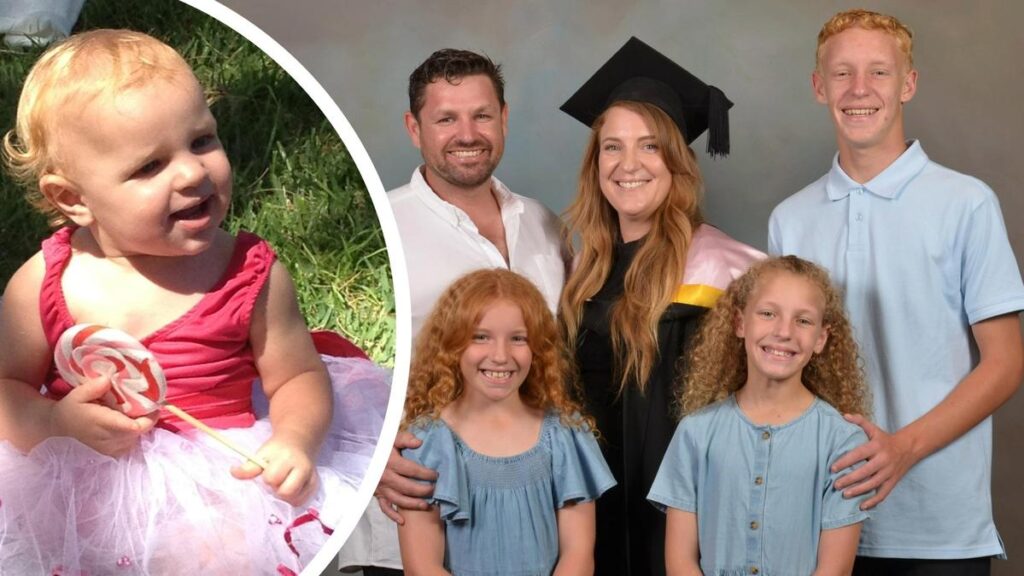
Melanie Andrews with her husband and thee children Chase Paisley and Eden. Her daughter Mylee, right, suddenly dies in her sleep.
When Melanie Andrews kissed her 15-month-old daughter, Mylee, goodnight, she never imagined it would be the last time. The Perth mother was devastated to find that her daughter had died suddenly in her sleep without any warning. “We put her to bed a happy, healthy little girl, and when I went to get her in the morning, she had died sometime during the night without sound or warning,” Melanie recounted.
Mylee, known for her strawberry blonde hair, big blue eyes, and chubby little hands, became a tragic symbol for the sudden and unexplained loss that many families face. Her story is being shared as part of Red Nose Day, an event dedicated to raising funds and awareness for Sudden Infant Death Syndrome (SIDS) research.
“I just remember I kept whispering ‘is this really happening’ because in that moment it just seemed so surreal and I just couldn’t actually believe that our little girl was gone,” Melanie said.
Uncovering the Cause
For three years, Mylee’s death was classified as unexplained. However, further testing revealed an undiagnosed immune condition exacerbated by a bacterial infection. This discovery brought a mix of relief and guilt for Melanie. “You live with guilt every day wondering if you could have done anything different,” she explained. “To know that her death was preventable added another layer of complexity.”
This revelation became a turning point for Melanie, motivating her to prevent other families from experiencing similar pain. “I realized that if I wanted to see a change, I had to be the change, so I came to the University of Western Australia,” she said. Melanie pursued a Bachelor of Biomedical Science, graduating with honors, and is now undertaking a PhD.
Research and Advocacy
Melanie’s PhD research at the University of Western Australia focuses on the potential links between certain bacteria, immune responses, and sudden unexplained deaths in childhood. This rare and devastating cause of death continues to puzzle medical experts worldwide. “It rocked our entire world, it changed the person that I am and it changed what I thought of life,” Melanie reflected.
Her work aims to find answers for families who have lost children to similar unexplained conditions. “My ultimate goal was that no family ever felt what we did and never had to endure losing a child because it is the worst possible pain that you could imagine,” she said.
“Mylee was such a happy, cheerful, bubbly little girl. She was really mischievous and full of life, and we would never have had any indication that anything was wrong,” Melanie remembered.
Supporting Red Nose Day
The importance of Red Nose Day is not lost on Melanie, as it supports families in their quest for answers and helps prevent future tragedies. “Getting involved and supporting Red Nose Day really supports families like mine who have lost children to get answers, and it supports other families who have little ones and hopefully we can prevent them from dying in the future,” she said.
Red Nose Day has become a crucial event for raising awareness and funding research into SIDS and other unexplained childhood deaths. The initiative aims to provide support for bereaved families and fund critical research that could save lives.
As Melanie continues her academic and advocacy journey, her story serves as a poignant reminder of the fragility of life and the power of turning personal tragedy into a mission for change. Her dedication to understanding and preventing sudden childhood deaths highlights the profound impact that one person’s determination can have on the lives of many.






